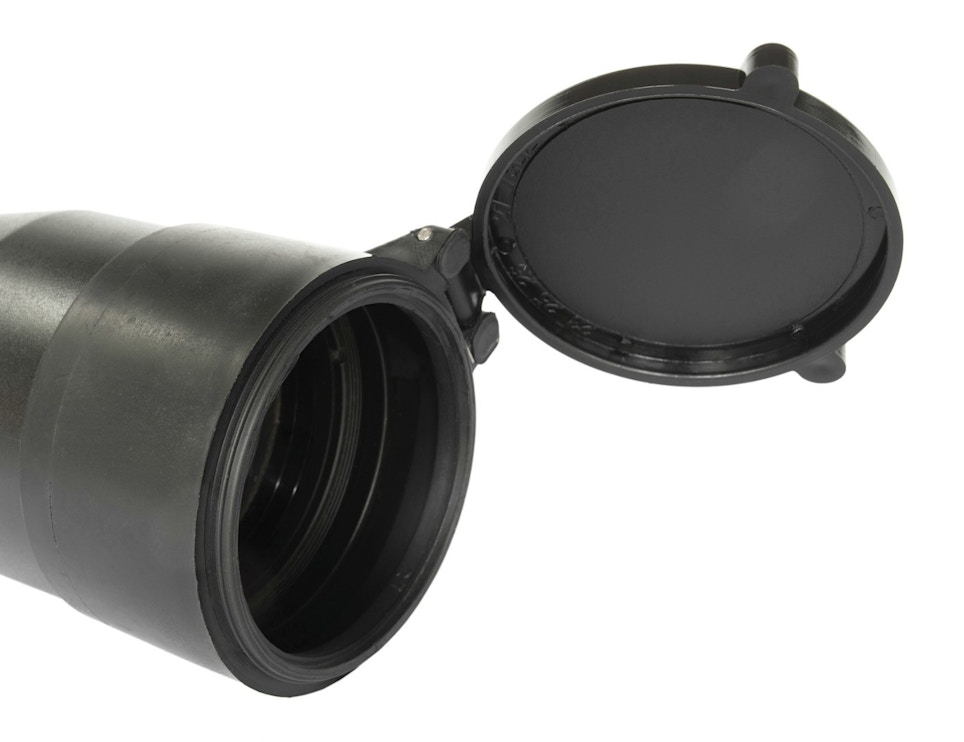The tactical retail game hasn’t changed, but the record-setting sales pace this spring put a lot of new faces on the playing field. The volume of first-time gun owners coming through your door promises increased foot traffic and an improved bottom line.
Turning them into regulars is the challenge, and one of the keys is showcasing your customer service and knowledge. They may not be looking to make another big-ticket purchase, but a simple recommendation that they install an inexpensive set of riflescope covers to protect that investment goes a long way.
Better yet, offer to do it, walk them through some cleaning tips for that optic, and they’ll remember the extra effort before they hit the “purchase” button on your competitor’s website.
Fast and Easy
Riflescope cover installation doesn’t demand much time at the counter. In fact, it’s fast and almost effortless. It does, however, provide an opportunity to get to know the owner and their needs, as well as communicate a genuine interest in their pursuit of the sport. It’s also a great time to recommend training sessions to new enthusiasts.
Quality optics are a long-term investment and often carry warrantees good even after the original purchaser has relinquished ownership. They tend to work on any rifle — yet another reason that bargain basement buying isn’t always budget friendly. Retailers know that, but customers regularly buy one without dust and dirt covers. Yes, it has a guarantee, but why compromise cutting-edge clarity and performance by allowing dust, dirt and grime to collect between firing-line session?
There are plenty of dust cover models to choose from, likely several on your shelves right now. For most enthusiasts — especially the new ones — functional and budget-friendly work fine.
Educational Service
Experienced owners probably don’t need a guide as you follow standard safety precautions but if the owner is new to the fraternity, it won’t hurt to walk them through the steps as you drop the magazine, make the gun safe, double check there is no round in the chamber and keep the gun pointed in a safe direction. It’s also a good idea to take out the bolt on a bolt-action rifle.
There’s no reason to remove the scope if it’s already mounted on the gun, though. Bear in mind, too, that these photos were taken unmounted for clarity, on a perfectly functioning family heirloom that deserves added protection. Inexperienced owners aren’t the only demographic that needs these inexpensive accessories.
Determine the right scope covers for the optic — most manufacturers have a handy cross-reference, but if all else fails, use calipers to determine the proper diameters. Open the box, inventory and inspect. Work the flip-up covers to ensure proper function.
It sounds routine but looking for manufacturing defects immediately reinforces one of the big advantages of buying from a brick-and-mortar retailer. Your returns to the distributor are free, effortless and without headache, unlike internet purchases.
Use a soft-bristled brush made for the task to gently remove dust from the riflescope’s glass if necessary. Now’s a great time to mention how dust chokes contrast during image transmission, and that the brushes are an ideal addition to a range bag. Canned air’s another option for the chore, although less than ideal at the firing line.
Inspect for fingerprints or smudges that remain and clean with a manufacturer-recommended cloth and gentle solution only if necessary. Use a circular motion working from the center out. This is an ideal time to explain the coatings on high-quality lenses and how paper towels and abrasive solutions can strip them from the surface and compromise performance. Hopefully, you have a small inventory of brushes and clothes to suggest.
Clean the exterior surfaces at the objective and eyepiece where the covers will mount. Sand and grit hiding there can scar the riflescope’s surface otherwise. Remove any debris on the interior of both covers by giving them a quick cleaning.
Align the covers roughly where the mechanisms will be readily accessible for the owner. Look for other accessories that could get in the way of the releases and adjust accordingly. Then snug the scope covers on. Rotate if needed, carefully to avoid marring the scope’s finish. Give them one final function test and you’re done.
The process doesn’t qualify as rocket science or advanced virology, but it’s fast and easy, and it’s another service to keep your shop and customer service at the top of that gun owner’s list.






